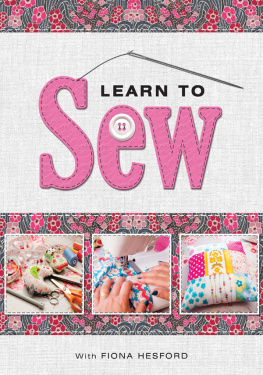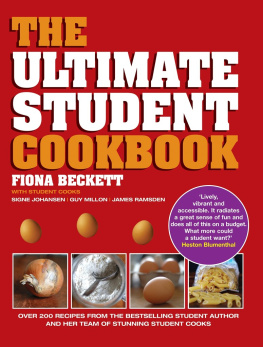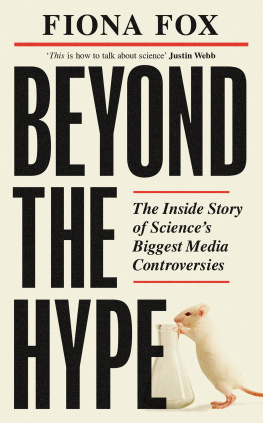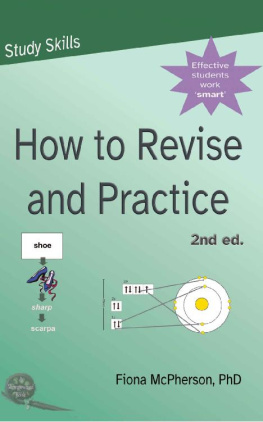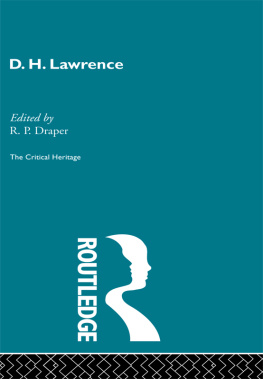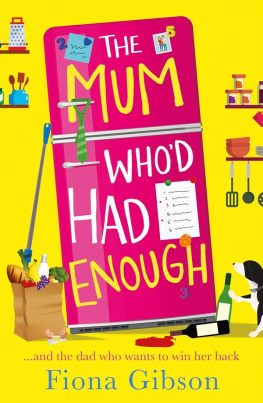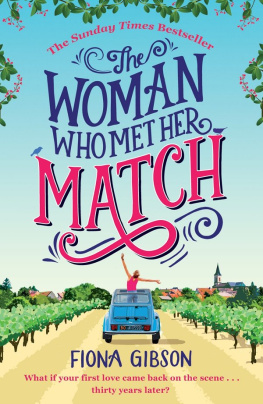Contents
Guide

Contents

Chapter 1.
Sewing Tips
Keep children safe and away from the sewing area.
Be safe when using a sewing machine, keep fingers away from needle area when in action.
Its a good idea to have a clean bright area or room dedicated to your sewing, it saves you having to clear away in the middle of a project, with one table for laying out and cutting and a separate one for your machine.
Be organised using see through plastic boxes allows you to see what you have quickly. Have your equipment close to hand when working and why not stick a small paper bag to the table a handy bin for off cuts.
Remember to always pin fabric with the raw edges on the right hand side and the pin head towards you and keep to your required seam allowance ie the distance away from the raw edge. Finish all raw edges to avoid fraying with pinking shears or zig zag stitch.
Trim ends before sewing to avoid them getting caught up in the machine.
If your sewing gets stuck in the machine, remove all fabric, clear all threads and start again, always have the needle in the highest position when removing from the machine.
Make your own pin cushion using scraps of fabric and fill with lentils.
Start your own fabric stash, save money by using old cut up clothes, curtains, fabric swatches and bedlinen and recycle buttons zips and trims.
Up cycle clothing by adding pockets, trims, collars, or appliqu a design, let your creativity run riot.
Keep your machine well maintained by giving it a regular service and treat it to some oil. occasionally i.e. dab some machine oil on to a brush and coat any visible moving part.

Chapter 2.
Sewing Equipment
Its a good idea to stock up on some basic equipment before you get started.
Here is a guide to the items recommended when beginning to sew...


SEWING MACHINE: (top or front loader). Look out for one with a side cutter, an auto needle threader a removable front table and seam allowance markings.
Fabric Types:
When starting to sew, choose inexpensive fabrics to start with and consider the type of fabric needed for the project you are undertaking.
For example if you are doing some bunting or a gathered skirt for example, choose lightweight fabrics such as cotton, polyester cotton, viscose.
For projects such as cushions, patchwork, throws, table runners or more structured clothes such as an A-Line skirt or an unlined dress, you need medium weight fabrics.
When sewing bags or storage containers or garden cushions, heavier weight fabrics are best for durability, choose denim, canvas, cotton duck, corduroy or upholstery fabric.
Some fabrics have a pile, ie they have a soft carpet like feel such as velvet, corduroy. These fabrics are best steamed rather than pressed with an iron and have a direction to them (nap) so take care when matching up pieces.
Fabrics such as felt and fleece dont fray at the edges when cut, so are good fabrics for starter projects.
Satin fabric is shiny and frays quite easily, but is cheap and effective especially when sewing costumes.
Stretch fabric such as jersey or lycra is good for close fitting projects.


Other tools :
Stitch Ripper or Stitch Unpick: this is invaluable for undoing seams quickly by slicing through stitches.
Tape Measure and ruler and a fabric marker or a soft pencil
Hand sewing needles: have a selection of different sizes with small and large eyes for easy threading.
Machine needles: have a selection of assorted sizes and use the appropriate needle for your fabric type.
Needle Threader: (for hand sewing needles only) pass the wire loop through the eye of the needle and drop the thread in to the loop and pull through. They are quite fragile so handle with care.
Thimble: this is a finger protector when hand sewing.
Pinking Shears: good quality shears will last a lifetime so keep sharp by folding tinfoil in half then quarter and cut into several times.
Pins: choose sharp ones with a bead head and a pin cushion is also useful.
Velcro: for using with fabric use sew on velcro.

Buttons: a pack of assorted colours and sizes is easily available.

Threads: A range of inexpensive 1000m reels of threads in an assortment of colours will mean you always have a suitable thread and plenty of it! Other specialist threads available include extra strong thread, quilting thread, topstitch thread, invisible thread, machine embroidery thread, these can all be used on a machine.
Trims: ribbons of all kinds are inspiring as well as ric rac trims, fringes, lace, beading and pom pom trims to name but a few. Its a good idea to get a mixed assorted bag to get you started.
Bias Binding or seam binding: this is a folded strip of fabric sold by the metre which has been cut on the cross grain of the fabric to allow stretch. Useful for bunting or finishing raw edges and hems.
Zips: dress zips, concealed zips, open ended zips and continuous zipping (for cushions).
Wadding: this is used when making a quilt and is sold by the metre in a selection of thicknesses and available in polyester or natural fibres.
Toy Stuffing/ cushion pads: have some to hand or a pad or two for when making cushions.
Interfacing: Useful for adding thickness to fabrics, available in fusible or non-fusible types. Iron on fusible interfacing to the reverse side of fabrics.
Bonding web: suitable for use when doing an applique shape.
A Poker: useful for poking out corners use a chunky knitting needle or a chopstick and keep close to hand.
Magnetic Seam Guide: this clamps on to the metal plate of the machine and helps you to sew straight and keep to your seam allowance.

